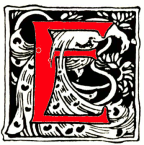[The following passage from the Chambers 1838 Gazetteer of Scotland appears on page 282-83. — George P. Landow.]

dinburgh, the capital of Scotland, and the head town of the above county [Edinburghshire], occupies an exceedingly romantic but incommodious situation, within two miles of the south shore of the Frith of Forth, forty-eight miles from the borders of England. The latitude of its observatory is 55° 57' 20"; its longitude, west, 3° 10' 30". Its distance from London is 392 miles; from Berwick-upon-Tweed, 57; from Haddington 17; from Kelso: 42; from Melrose 36; from Coldstream 47; from Carlisle 92; from Peebles 22; from Lanark 32; from Dumfries 71; from Ayr, by Carnwath 76 ; from Glasgow, by Fal12. kirk, 46|, by Airdrie, 42|, by Mid-Calder, 44; from Stirling, by Falkirk, 35; from South Queensferry 9; from Dunfermline 16; from Dundee, 42; from Cupar-Fife, by Kirkcaldy, 29; from Perth 44; from Aberdeen, by Perth and Forfar, 121; from Inverness, by Aberdeen, 243; by Blair Athole and Aviemore, 152; from Wick 295; from Thurso 316; and from John o' Groat's House, or the most northern point of Scotland, 314. These distances are always undergoing a mutation by the improvement and shortening of the roads.

Edinburgh from Argyle Tower. Hanslip Fletcher. 1910. Click on image to enlarge it.
A proper knowledge of the configuration of the ground on which the city of Edinburgh has been built, will "considerably lessen the difficulty of comprehending a variety of details regarding its present and prospective condition. From the shore of the Firth of Forth, the ground rises gently towards the south, till, at the distance of a mile, it reaches a level of from fifty to a hundred feet above the surface of the sea. Here a congeries of hills and swelling grounds, alluded to in the preceding article, suddenly ruffles the smooth surface of the country, having been to all appearance cast up by the influence of some tremendous explosion, or convulsion, such as it would now be difficult to explain, in regard to its causes, its process, or its results. A circle of four or five miles would embrace this series of hills, which, even in their natural state, must have had a very remarkable and striking appearance. The central individual in the chain, which can be compared to nothing so aptly as to a wedge lying flat upon the ground, is terminated, at its highest part, by a mass of rock, seven acres in superficies at top, and about two hundred and fifty feet above the surrounding country; on this stands Edinburgh Castle, the nucleus of the city.

Edinburgh and Corstorphine from the Castle.. Hanslip Fletcher. 1910. Click on image to enlarge it.
Along the slope of the wedge (so to speak) the original town was built in the shape of one spacious street, of a mile in length, with lanes or closes declining on both sides towards the neighbouring valleys. On the plain at the bottom, the palace of Holyrood-house, which was the chief residence of Scottish royalty in its latter days, took its rise from an ancient monastery. For a thousand years, Edinburgh continued perched like one vast fortress upon this hill, prevented from expanding partly by the advantage of easy fortification on its original site, and partly by the difficulty of crossing the neighbouring hollows, one of which was filled by a lake. At length, when the advancing prosperity of the country woidd no longer tolerate the confined accommodations of the ancient city, bridges were thrown over these ravines, and new districts of town erected upon the adjacent heights. Thus Edinburgh, like Rome, is a town scattered over and among a range of eminences, some of which ascending in craggy magnificence from amidst the most beaten thoroughfares, are capt by tower and temple, while others are hardly approachable by the step of man, and might even yet give shelter to the eagle, which no doubt haunted them in primeval times. Two of these hills, called Arthur's Seat and Salisbury Crags, form, with their precincts, a park adjacent to the palace, and being still kept perfectly free from the intrusion of the town, present peaks and valleys as lonely and wild as if they 'were in the heart of the Highlands instead of the immediate vicinity of a populous city. The town of Leith, or the seaport of Edinburgh, as will afterwards be noticed at length, occupies a low situation on the sea-shore, in a north-easterly direction from the city.

Old Bridge, Leith.. Hanslip Fletcher. 1910. Click on image to enlarge it.
Bibliography
Chambers, Robert. The Gazetterr of Scotland. Edinburgh: Blackie and Son, 1838. Internet Archive online version digitized with funding from National Library of Scotland. Web. 30 September 2018.
Last modified 23 February 2019